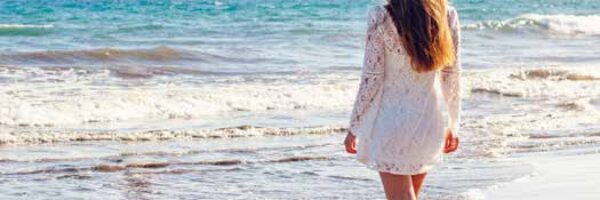
11 Most Bizarre Places In The Word You’re Not Allowed To Visit
In the 21st century many of us are able to travel more frequently than ever before. With cheaper airfares, fewer visa restrictions and tons of ways to plan your trip online, travelling all over the globe has become, for many of us, easier than ever. For seasoned backpackers, who are no strangers to giving in to their wanderlust and journeying to far-flung locations on a whim, it may seem unthinkable that there are still places in the world that you are simply not allowed to visit. From a snake-filled island in Brazil to a Chinese emperor’s tomb to the most exclusive club in Disneyland, read on for our list of the 11 most bizarre places in the world you’re not allowed to visit.
1) Snake Island, Brazil
Snake Island, or Ilha da Queimada Grande as it’s officially known, is located off the coast of Brazil, approximately 18 miles from the coast of São Paulo. A 106-acre island populated with patches of rainforest and enjoying a temperate climate, Snake Island might have become a popular day-trip for tourists to São Paulo. If it wasn’t for all the snakes, that is. Snake Island is home to over 4,000 of the world’s most deadly species of snake.
A rare species of pit viper known as the Golden Lancehead Viper, the snakes on Snake Island possess venom that can actually decompose human flesh. The Golden Lancehead Viper is responsible for 90% of the snake-related deaths in Brazil and on Snake Island there are said to be between one and five snakes per metre of land, a nightmarish image. The inhabitants of Snake Island are so dangerous that the Brazilian government banned anyone from visiting the island, a ban that is enforced by the Brazilian Navy.

2) Lascaux Caves, France
The Lascaux Caves are one of the world’s best surviving examples of Paleolithic cave paintings. Located near Dordogne in south western France, the Lascaux Caves complex features artwork that has been dated as 17,300 years old. The artworks mostly depict large animals that, thanks to the recovery of fossils in the surrounding area, are thought to have lived at the time. Discovered in 1940 by a group of local teenagers, the cave was opened to the public in 1948. In subsequent years over a thousand visitors visited the caves per day to admire the historic paintings.
The Lascaux Caves became a UNESCO world heritage site in 1979 but due to the contaminants brought into the caves by the high volume of visitors, the bright lights introduced to better show the paintings and an unsuitable air conditioning system, the caves have been beset by damaging fungus. In 2008 the caves closed to the public completely in an attempt to preserve the original artwork for as long as possible.
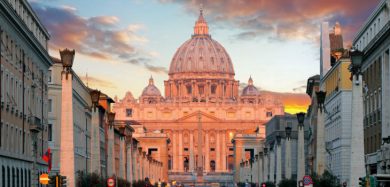
3) Vatican Secret Archive
Most of the Vatican Secret Archive is located underground, deep within the walls of Vatican City and is a place only a select few people have ever seen. It is estimated that there are over 2 miles of shelving in the archive, packed with over 35,000 items of historic paper ephemera. Amongst the archive’s treasures are the epic history of the acts of the Holy See, papal accountancy documents, state papers and correspondence that is said to include letters from Michelangelo and Mary Queen of Scots. A small, dedicated team of archivists look after the Vatican Secret Archive, sworn, I presume, to secrecy as to what exactly the archives contain and a handful of carefully selected scholars from the world’s best institutions can also access the archives each year for study purposes.
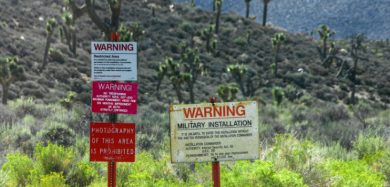
4) Area 51, United States
For many, Area 51 is the world’s most notorious inaccessible place. Area 51’s official name is Edwards Air Force Base, an isolated detachment of the United States Air Force located in Southern Nevada, approximately 83 miles north-northwest of Las Vegas. It is believed that the site of Area 51 was initially acquired by the US air force in 1955 and used to flight test a new aircraft. The facility has always been shrouded in complete secrecy, the US government even formally denied its existence, so people have come up with their own theories as to its use.
The most popular theory is that Area 51 is used to store crashed alien space crafts and experiment on aliens, both living and dead. The popularity of this theory has turned the area around Area 51 into a popular tourist destination. In 2013, in response to a Freedom of Information Act, the CIA publicly acknowledged the existence of Area 51 and released a series of formerly classified documents about its use to the public but Area 51 is still completely closed off to the public.

5) Tomb of the Qin Shi Huang, China
In the Lintong District of the Shaanxi province of China there sits an incredibly elaborate mausoleum and tomb that is thought to have been constructed over 2,260 years ago. China’s first emperor, Qin Shi Huang ordered the construction of the burial complex in the year 246 BC and it took 38 years to complete. Buried deep beneath a 76 meter tall mound of earth, the tomb is at the centre of an epic mausoleum modelled on the Qin capital city.
A complicated network of tunnels and caverns surround the tomb, one of which includes the famous Terracotta Army, a 2,000 strong garrison of life-sized clay reproductions of Qin warriors created to protect Qin Shi Huang in the afterlife. Initially discovered in 1974, the mausoleum surrounding the tomb is still being excavated and it is thought there may be up to 6,000 more figures yet to be uncovered. While tourists are welcomed to visit Qin Shi Huang’s Terracotta Army, the Chinese government has suggested that they will never open up the ancient emperor’s tomb.

6) RAF Menwith Hill, United Kingdom
Located in a picturesque part of the world on the outskirts of Harrogate in North Yorkshire, RAF Menwith Hill is a notorious British Royal Airforce Station that is controversially run by the U.S. National Security Agency. Reasonably secluded, RAF Menwith Hill covers an area of about one square mile of the Yorkshire Moors and is completely out of bounds to the public. The site is described as being home to the largest electronic monitoring station in the world and is dominated by an extensive satellite ground station, recognizable for its giant golf ball-like structures known as radomes.
The U.S. National Security Agency took over Menwith Hill in 1958, establishing it as a high frequency radio monitoring centre to listen in on the Soviet Union during the Cold War. Officially the NSA uses Menwith Hill for legal communications interception and missile warning but critics of the site claim it may be used to secretly monitor and intercept the public. Menwith Hill is believed to be an integral part of the ECHELON system, a massive and controversial surveillance system used by an alliance of the United States, the United Kingdom, Canada, Australia and New Zealand.

7) Bohemian Grove, United States
Bohemian Grove is not as secret as it once was. Located on the fairly brazen ‘Bohemian Drive’ in Monte Rio, California, the 2,700 acre plot of forest and campground is owned by a private men’s club that hails from San Francisco. Each year in July, the club hosts a two-week retreat that is said to be frequented by the most rich and powerful men in the world. What goes on during this retreat is the subject of much speculation with claims of pagan rituals and drug-fuelled orgies going on in the secluded location.
Gaining admission to the Bohemian Grove club is all but impossible unless you happen to be the president of a country or the CEO of one of the biggest conglomerates in the world, although a few civilians have managed to infiltrate the proceedings. The most famous of these is conspiracy theorist and filmmaker Alex Jones who entered Bohemian Grove with a cameraman in the year 2000, an escapade documented by writer Jon Ronson in his book Them: Adventures with Extremists.
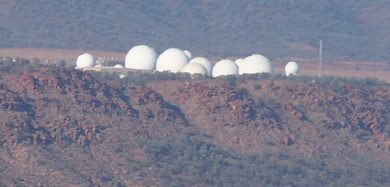
8) Pine Gap, Australia
Pine Gap, located south west of Alice Springs in the Northern Territory of Australia is believed to be key contributor to the ECHELON system, just like Menwith Hill in the UK. The centre is also run by the U.S. National Security Agency and is home to a huge computer surveillance system and 14 radomes. Since 1998, the centre has been known as the Joint Defense Facility Pine Gap, the ‘joint’ part referring to the partnership between Australia and the U.S.
Known as the Australian equivalent of Area 51, access to Pine Gap is completely restricted to all with the exception of the facilities 800-plus employees. Pine Gap is the only area of land in Australia that is designated a no fly zone and the area is believed to be used in the creation and testing of drone strike programs. Information leaked by former CIA employee Edward Snowden revealed Pine Gap to be one of four locations used in the U.S.’s controversial PRISM surveillance program.

9) Moscow Metro-2, Russia
Beneath the city of Moscow there is believed to be not one but two extensive underground metro systems. Moscow Metro-2 is said to run parallel to the public metro system in Moscow, Russia and while many have speculated on its uses the reason it was constructed in the first place remains a mystery. Believed to be built by the KGB during Joseph Stalin’s reign, Metro-2 connects the Kremlin with Moscow’s Federal Security Service (FSS), the government airport and other locations important officials might like to be able to secretly access in case of emergency.
The FSS have never outright denied the existence of the Moscow Metro-2, thought to be codenamed D-6, but they have never admitted to its existence either. A 1991 report by the United States Department of Defense is thought to include a map of the entire Metro-2 system and in 1994, the leader of a group named Diggers of the Underground Planet, claimed they had found an entrance to the secretive metro system.
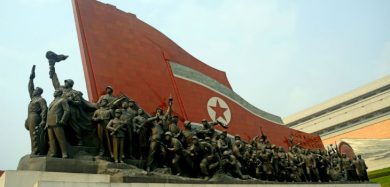
10) Room 39, North Korea
Said to be the most secretive and insulated country in the world, North Korea does not open its borders to tourists unless they are accompanied by a government guide, an arrangement that ensures their every move can be monitored. Room 39, also known as Bureau 39, is a secret government organization located within a secret government building in the most secretive country in the world. The fact that we even know about its existence seems miraculous.
Rumored to be located in Pyongyang within the ruling Worker’s Party building, Room 39 is close to Kim Jong-Un’s personal residence. Within Room 39, it is said, representatives of supreme leader Kim Jong-Un’s government administrate over illegal activities including drug smuggling, arms dealing and money laundering in order to increase the personal piggy bank of Kim Jong-Un and develop North Korea’s nuclear weapon program. Room 39 is thought to have more than 20 bank accounts located in Switzerland and China, all of which are used for illegal dealings that are thought to bring in between $500 million and $1 billion into North Korea per year.

11) Disney Club 33 Exclusive Club
From illegal activities inside the most secretive country in the world to sipping martinis in a private members’ club in Disneyland. Located at the intersection of Royal Street and Orleans Street in New Orleans Square, Disneyland, California, the 33 Club is about as exclusive as it can get outside of Bohemian Grove. Club 33 is not open to the public and exclusive members get access to a fully-stocked bar, the only place to get a drink within the perimeter of tee-total Disneyland.
Members benefit from much more than just a drink in the daytime though as they also get premier passports for Disneyland and Walt Disney World, early admission, free valet parking and a whole host of other handy perks. Believed to have been created as an elaborate thank you to the 33 corporate sponsors who first funded the creation of Disneyland, Club 33 now charges its members for the privilege of its use. Initiation fees cost $40,000 per year for corporate members and $27,000 for individual members as well as $12,000 per year for fees. There’s no such thing as a free drink.
Source: www.smarttravel.tips


